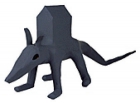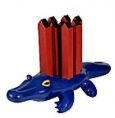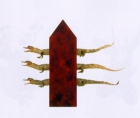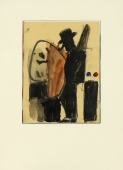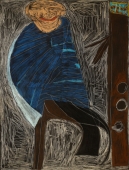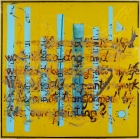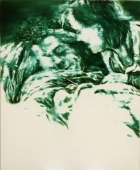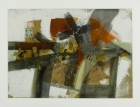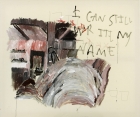
Artist | Roland Faesser
https://www.artist-info.com/artist/Roland-Faesser
Biography
Biography
Born in Lima Peru
Studied architecture in Switzerland
Instructor for Visual Design, Swiss Federal Institute of Technology, ETH Zurich
Received grant from Steo Foundation, Zurich
Guest lecturer at F+F Art School Zurich
Instructor Architectural Design, Swiss Federal Institute of Technology, ETHZ
Directed summer course «Acceptable Realities» Zurich University of the Arts
Guest lecturer for Three-Dimensional Design at F+F Art School Zurich
Juror final degrees at Zurich University of the Arts (ZHdK)
Sabbatical, New York City
Lectureship for Scenic Design at Zurich University of the Arts (ZHdK)
Guest lecturer Scenography, Saint Martins College of Art & Design in London
Lectureship Intermedia at the Academy of Design in Vorarlberg, Austria
Lectureship for Interior Design at Zurich University of the Arts (ZHdK)
Representation Zurich University of the Arts, AIAS symposium in Seoul, Korea
Lectureship Industrial and Scenic Design, Zurich University of the Arts, ZHdK
Directed summer course «Body Extensions» at Fashion Design School Zurich
Lectureship Image Lab, Swiss Federal Institute of Technology, ETH Zurich
Solo Exhibitions
Solo Exhibitions
1990 Andy Jllien Gallery, Zurich
1994 Brochier Gallery, Munich
1996 Hartmut Beck Gallery, Erlangen
1997 Hartmut Beck Gallery, Erlangen
1999 Galerie Andy Jllien, Zürich
Group Exhibitions
Group Exhibitions
1987 Strauhof Gallery, Zurich
1987 Zeus Gallery, Milan
1987 Art Museum, Glarus
1987 Grand Palais, Paris
1987 Art Museum, Zurich
1988 Weinand Gallery, Berlin
1989 Museum of Arts and Crafts, Berlin
1991 Museum of Design, Zurich
1994 Steirischer Herbst, Graz
1994 BildRaum Gallery, Zurich
1994 Museum of Design, Zurich
1994 Shedhalle, Zurich
1995 House of Culture, Linz
1995 House of Art, Munich
1996 Brochier Gallery, Munich
1997 Blau Gallery, Freiburg
Public Collections
Public Collections
1986 City of Zurich
1986 Werkbeitrag Steo Stiftung Zürich
1987 Bank Julius Baer, Zurich
1990 Hauser & Wirth Collection, Zurich
Commissions
Commissions
1994 Skulptures, kindergarten in Frankfurt, architects: Kollhoff & Timmermann, Berlin
1996 Skulptures, house for musicians in Zurich, architect: Miroslav Sik, Zurich
1997 Skulptures, kindergarten in Munich, architect: Baureferat Munich
Competitions
Competitions
1984 - 97 Various prizes and purchases
About the work (english / deutsch)
About the work (english / deutsch)
The wind menagerie
The nature and development of aquatic animals - an exhibition
In the animal world, there are creatures who swim and others who do not. Then, there are others who swim only after they have been inflated. (There is also the bullfrog – he inflates himself.) The creatures belonging to the third category are displayed immobile, flattened and inconspicuously on the shelves of larger and smaller department stores or at seaside kiosks until someone comes by and breathes life into them. Once inflated to full size, one can sit astride them or hang on to their curvy bodies and throw oneself into the ocean waves or drift along with pale blue stream of the Ungerer – wonderful!
From a hygienic point of view, inflatable animals are highly recommended companions. They do not make a mess, do not bite, smell only slightly of rubber and never make a noise, except when they are on their last legs. A continuous “hiss” might then be heard. Even when you stub out a cigarette on them, they will still not make a noise.
Those people who like to cross the Atlantic, sometimes criticise these creatures’ poor durability. The body usually gets a puncture somewhere sooner or later and then slowly collapses. For some people who have wanted to travel from Africa to the Caribbean on the back of a rubber crocodile, a sea urchin on the beach has led to disaster before the journey had even begun. (The author once had the idea of being the first person to sail from Marseille to Algiers with an inflatable, black gorilla. However, during the preparation, little Marie took the animal for a walk and passed too closely by a rose bush. That was the end of that).
Swiss artist Roland Fässer could not stop thinking about the brief existence of inflatable animals. He inflated several of them to full size and then, so to speak, mummified them. Fässer’s “series of household pets” can be seen until the 6th. August in the Brochier Gallery, Klenzestrasse 32. Here, we were informed that he wrapped the creatures in material soaked in plaster and then made a cast in a sort of cellulose mixture. (Please excuse this amateurish description!) He then smoothed the surface to such perfection that, at first glance, one would think one was looking at the original if only Fässer had not defamiliarized the creature’s shape during this working process. His interpretation of the expression “household pets” is that every animal, whether crocodile or swan, carries one or several houses either on its back or as tumorous projections from its body, or as with the sculpture “Hausvorstand”, the creatures themselves stream out of the houses.
Can one do this? One might ask what has happened to the original animal in the meantime! Is it really still in there? Is the artist telling the truth? Is the crocodile, swan or fish inside Fässer’s objects still alive? Is it still inflated and just carrying its hard outer shell? Maybe the creature is bracing itself against the shell, trying to burst it from the inside? Like a suit of armour, does the shell serve as protection against the “prickly” situations in life? Or, did the animal wither away at some point in time, dead, so that the empty shell is just a memory of a creature who lived long ago? Its monument?
To put it in a nutshell, has this to do with the immortalisation of a living or of a deceased creature?
It is worth mentioning that during the conversation with the owner of the gallery, he drew our attention to the fact that the smooth surface of the sculptures is characteristic of our times. We would like to add that because these animals are inflated and are made to be so durable, we think these pieces of art are very suited to this summer, in fact to the nineties in general and to the city of Munich. To quote the owner of the gallery again: “I think they’re absolutely relevant”. That is putting it mildly.
Text by Axel Hacke (Page 16 / Süddeutsche Zeitung no. 174 - 30./31.7.94, Culture in Munich)
Die Blasmenagerie
Vom Wesen und Werden des Schwimmtieres - eine Ausstellung
Unter den Tieren gibt es solche, die schwim-men, und solche, die nicht schwimmen, und dann jene, die erst schwimmen, wenn man sie aufgepustet hat. (Viertens gibt es noch den Ochsenfrosch - der bläst sich selber auf.) Die Wesen der drittgenannten Kategorie liegen starr, platt und unscheinbar in den Regalen grosser und kleiner Kaufhäuser sowie den Auslagen der Strandkioske, bis der Mensch kommt und ihnen Leben einhaucht. Dann werden sie gross, und man kann sich, auf ihnen reitend oder in ihren dafür vorgesehenen Körperrundungen hängend, in die Wellen der grossen Meere schmeissen oder über die blassblauen Fluten des Ungererbades treiben lassen - schööön!
Aufblastiere sind, vom hygienischen Standpunkt aus betrachtet, sehr empfehlenswerte Lebensgenossen. Sie produzieren keinen Mist, beissen nicht, riechen bloss ein wenig nach Gummi, und Geräusche machen sie gar nicht; nur, wenn es mit ihnen zu Ende geht, hört man bisweilen ein gleichmässiges „Pfffft“, und selbst, wenn man eine Zigarette auf ihnen ausdrückt, werden sie nicht laut.
In Kreisen von Atlantiküberquerern wird den Aufblastieren gelegentlich ihre mangelnde Haltbarkeit zum Vorwurf gemacht: Meistens haben sie ja bald irgendwo ein Loch in den Körperwänden und fallen dann leise in sich zusammen - schon manchem, der auf dem Rücken eines Gummikrokodils von Afrika in die Karibik reisen wollte, wurde bereits am Strand ein Seeigel zum Verhängnis. (Verfasser hatte einmal den Plan gefasst, als erster Mensch mit einem schwarzen Aufpustegorilla das Mittelmeer auf der Strecke Marseille-Algier zu besegeln, doch ging während der Vorbereitungsphase die kleine Marie mit diesem Tier spazieren und kam einmal zu nah an einem Rosenstrauch vorbei. So konnte aus der Sache nichts werden.)
Dem Schweizer Künstler Roland Fässer hat die Kurzfristigkeit der Aufblastier-Existenz keine Ruhe gelassen. Er pustete verschiedene von ihnen zu praller Fülle auf, um sie dann quasi zu mumifizieren. Wie wir in der Galerie Brochier (Klenzestrasse 32) erfuhren, in der Fässers „Serie der aufgeblasenen Haus Tiere“ noch bis zum 6. August zu besichtigen ist, umwickelte er die Tiere mit gipsgetränkten Stoffen, umgoss sie sodann mit einer holzartigen Masse (Bitte um Entschuldigung für diese laienhaften Ausführungen!) und glättete sodann die Oberfläche, bis man auf den ersten Blick das ursprüngliche Aufblastier vor sich zu haben glauben könnte - hätte nicht Fässer im Rahmen seines Arbeitsprozesses die Form des Tieres auch noch verfremdet. Den Begriff des „HausTieres“ verstand er so, dass jedes der Tiere - ob Krokodil, ob Schwan - ein Haus oder mehrere Häuser entweder zu tragen hat oder aus seinem Körper gleichsam geschwulstartig heraustreten lässt oder, wie bei der Plastik „Hausvorstand“, selbst aus diesem Haus oder diesen Häusern sozusagen hervorquillt.
Darf man das? Immerhin stellt sich ja die Frage, was mit dem jeweiligen Aufblastier selbst unterdessen geschehen ist! Ist es überhaupt wirklich da drin? Sagt der Künstler die Wahrheit? Lebt Krokodil, Schwan, Fisch im Inneren der Fässerschen Objekte? Ist es noch voll Aufgepustet, trägt also das harte Äussere mit? Stemmt sich vielleicht sogar gegen sie, arbeitet an ihrer Sprengung von innen heraus? Dient die Schale ihm als Schutz gegen die Stecknadeln des Lebens, als Rüstung gleichsam? Oder ist das Tier selbst längst in sich zusammengefallen, gestorben, tot, so dass die hohle Kruste nur noch Erinnerung ist an ein längst abgelebtes Wesen? Sein Denkmal?
Um es auf den Punkt zu bringen: Handelt es sich hier um die Verewigung eines lebendigen oder eines toten Wesens?
Erwähnenswert ist noch, dass der Galerist uns gesprächsweise darauf aufmerksam machte, gerade die glatte Oberfläche der Skulpturen sei sehr charakteristisch für unsere Zeit. Wir möchten hinzufügen: Auch wegen der Aufgeblasenheit der Tiere sowie eben der Dauerhaftmachung dieser Aufgeblasenheit erscheint uns diese Kunst so passend für diesen Sommer, ja, für die Neunziger Jahre überhaubt und besonders für unsere kleine, grosse Stadt München. Um noch einmal den Galeristen zu zitieren: „Ich find‘s total relevant.“ Das ist noch milde ausgedrückt.
Text von Axel Hacke (Seite 16 / Süddeutsche Zeitung Nr. 174 - 30./31.7.94, Münchner Kultur)
Internet
Internet
homepage: http://www.faesser.com
e-mail: roland@faesser.com
 offers / Requests offers / Requests  |
About this service |
|---|
 Exhibition Announcements Exhibition Announcements  |
About this service |
|---|
 Visualization |
Learn more about this service | ||
|---|---|---|---|

Interested in discovering more of this artist's networks?
3 easy steps: Register, buy a package for a visualization, select the artist.
See examples how visualization looks like for an artist, a curator, or an exhibition place: Gallery, museum, non-profit place, or collector.

Exhibition History

|
SUMMARY based on artist-info records. More details and Visualizing Art Networks on demand. Venue types: Gallery / Museum / Non-Profit / Collector |
||||||||||||
| Exhibitions in artist-info | 6 (S 3/ G 3) |
Did show together with - Top 5 of 7 artists (no. of shows) - all shows - Top 100
|
||||||||||
| Exhibitions by type | 6: 6 / 0 / 0 / 0 | |||||||||||
| Venues by type | 3: 3 / 0 / 0 / 0 | |||||||||||
| Curators | 0 | |||||||||||
| artist-info records | May 1996 - Oct 2012 | |||||||||||
|
Countries - Top 2 of 2 Switzerland (4) Germany (2) |
Cities 3 - Top of 3 Basel (3) Erlangen (2) Zürich (1) |
Venues (no. of shows )
Top 3 of 3
|
||||||||||
|
Curators (no. of shows)
Top 0 of 0 |
| mitart gallery | G | Aug 2012 - Oct 2012 | Basel | (31) | +0 | |
| mitart gallery | G | Dec 2011 - Feb 2012 | Basel | (31) | +0 | |
| mitart gallery | S | Aug 2008 - Sep 2008 | Basel | (31) | +0 | |
| Andy Jllien | S | Sep 1999 - Sep 1999 | Zürich | (29) | +0 | |
| Galerie Hartmut Beck | G | May 1997 - Aug 1997 | Erlangen | (11) | +0 | |
| Galerie Hartmut Beck | S | May 1996 - Aug 1996 | Erlangen | (11) | +0 | |
| Keep reading |



















